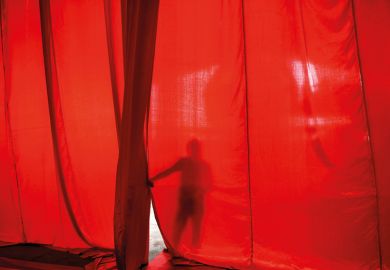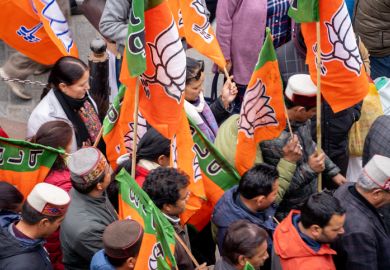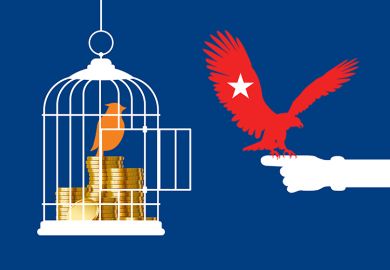Early in 2016, when I was teaching at a US university, traumatic events on the campuses of major public universities in India augured a terrifying crisis for the future of liberal education across the country.
In January, Dalit PhD student Rohith Vemula died by suicide after Hyderabad Central University had suspended him and stopped paying his scholarship, allegedly in response to a clash between a student association of which he was a prominent member and the student wing of India’s ruling Bharatiya Janata Party (BJP). Then, in February, Jawaharlal Nehru University (JNU) student Kanhaiya Kumar was arrested and charged with sedition after he led a protest against the execution of a convicted terrorist.
Among a range of bleak omens, I was forced to think about what these incidents portended for freedom of thought, expression and protest on the campuses of India’s new private universities, emergent at that time – one of which I was due to join later that year.
The critical question at that time felt something like this: would such institutions turn into exclusive bastions of wealth, power and privilege in the way that private schools had already done in Indian secondary education, where public education is now shunned by all but the poorest? And, if they did, what would that mean for the possibility of dissent on such campuses? Would their financial independence assure greater academic freedom? Or would their proximity to power result in even stronger restrictions than were evidently being adopted by – and imposed on – public universities?
Writing a piece for Times Higher Education on the prospects for Indian liberal education in May, I had little idea that the institution I joined that autumn, Ashoka University, would get caught up in a bitter controversy of its own later that very summer over an online petition against military activities in Kashmir. The furore led to the resignation of a faculty member and two members of the staff.
In the past seven years, we have learned on this same campus that financial independence is at best partial – and academic freedom is sometimes a strange kind of illusion. Rude lessons came in 2021, with the resignation of a prominent public intellectual and critic of the Narendra Modi government, in August, when economist Sabyasachi Das resigned after Ashoka publicly distanced itself from a paper he published accusing the BJP of manipulating the 2019 election results, and again in September when political scientist Gilles Verniers was allegedly forced to leave an Ashoka research centre he founded and led that provides real-time, open-access data on Indian elections.
Academic freedom goes to the very heart of the new private universities’ academic ambition, which sets them apart from most public universities in India. It is inseparable from the idea and reality of the modern research university, which has its origins in Immanuel Kant’s 1798 treatise The Conflict of the Faculties, in which the Prussian philosopher distinguished between those he called “scholars proper” and members of the intelligentsia occupying offices of professional practice. Kant calls the former the “lower faculty” and the latter the “higher faculty” with something approximating a sense of mischief, going on to say that the latter – professional fields of clergy, law and medicine – must keep the former at a “respectful distance” so that the “dignity of their statutes” is “not damaged by the free play of reason”. That belongs exclusively to the “philosophical” faculty – which, in due course, would branch out into all the different fields of the humanities and the social and natural sciences described generally as liberal arts, as opposed to professional or vocational fields.
Kant’s friend and advisee Wilhelm von Humboldt built on Kant’s ideas to set up the University of Berlin, central to which was freedom of scholarly enquiry and the unity of research and teaching. The perpetually unfinished nature of scholarly research required that its frontiers should never be closed off, either in research itself or in the teaching that flowed from it.
That, of course, was the precedent for the modern research university, which spread across the US from Johns Hopkins University to make the American university the most formidable manifestation of the Humboldtian triad of research, teaching and professional training. Of course, the US is now facing its own threats to academic freedom as the Republican Party attacks aspects of higher education that conservatives don’t like. According to a recent article in The Chronicle of Higher Education, by the end of summer 2023, eight states had legislated for restrictions in curriculum content, five had instituted restrictions on diversity, equity and inclusion and another 12 have had similar bills.
But such moves have provoked howls of outrage. By contrast, a key reason why it is so easy to suppress academic freedom in Indian universities without provoking much outrage beyond a diminished and embattled liberal intelligentsia is a simple one: the idea of the research university has never gained real momentum in this country.
The history behind this is manifold and multilayered, and it is the subject of much disagreement among scholars. The sociologist and former Ashoka chancellor André Beteille has traced the examination-structured, rote learning-driven character of Indian post-secondary education to the British intent of creating universities as clerk-making factories. While the Columbia cultural historian Gauri Viswanathan has elaborated the Macaulayian vision behind this colonial humanistic curriculum, other scholars have variously questioned the notion of the passive Indian subject colonised by this educational enterprise.
But, whatever the reasons, it is amply clear that research and teaching have been, to a great degree, institutionally separated in India, significantly shaping the culture of both. The university and its collegiate system have rarely been a venue for significant research, while research institutes such as the Centre for the Study of Developing Societies, the Centre for Studies in Social Sciences Calcutta, the Indian Statistical Institute and the Indian Institute of Science have little, if any, relation with undergraduate education.
We have started to see some exceptions to this trend in recent times, at least in the sciences. Institutions such as the Chennai Mathematical Institute and the appropriately titled Indian Institute of Science Education and Research, which has several campuses nationwide, have undergraduate as well as graduate programmes, often integrated with each other. Such developments are radically innovative in an educational landscape where undergraduate students traditionally consume existing knowledge without any input from the advanced professionals producing new knowledge.
The confluence of research and teaching in the same institutional venue confers a significance to both that goes missing when they are practised in separate spaces. And the need for academic freedom is never as obvious as when innovative research gets a life in the classroom, exposing students to the trials and errors of seeking new knowledge. In the absence of this togetherness, it is easy to let freedom backslide, in the classroom as much as in the rarefied spaces of labs, archives and minds.
It is not coincidental that the loudest dissent against the suppression of academic freedom initially came from a small number of universities that have thrived outside the collegiate colonial model: Delhi’s JNU, which was set up in independent India with a Nehruvian vision of social science research and advanced study; Jadavpur University in Calcutta, which was set up in the early 20th century as part of an anticolonial nationalist movement; and Hyderabad Central University in Hyderabad, which was set up in the 1970s. The fact that these universities were quickly branded “anti-national” has as much to do with their relative fusion of research and teaching as with the words and actions of their left-liberal students and faculty, who can be found aplenty in other institutions as well.
Equally, in the general absence of any fusion of fundamental enquiry with immersive pedagogy, it becomes easy for opponents to attack “activist teachers” or “a culture of student dissent”, dismissing them as rogue elements inessential to the mission of the university. It even becomes possible to spin the illusion that a university can shape smart, innovative graduates, experimenting across a liberal span of disciplines, without these students demanding the critical freedom to question authority and challenge social inequity. These are the contradictions that have placed liberal arts education under recent stress across Asia – most strikingly, in the severance of the highly publicised collaboration between Yale and the National University of Singapore that led to the short-lived Yale-NUS College.
The union of research and teaching is Ashoka’s declared goal. But any university that aspires to be taken seriously as a research institution capable of producing high-powered graduates must be sharply mindful of the unique freedom that is neither merely about liberty in the classroom or open frontiers in research, but resides at the powerful confluence of both. That freedom must be preserved even when it proves explosive in a particular political context.
Saikat Majumdar is professor of English and creative writing at Ashoka University.
Register to continue
Why register?
- Registration is free and only takes a moment
- Once registered, you can read 3 articles a month
- Sign up for our newsletter
Subscribe
Or subscribe for unlimited access to:
- Unlimited access to news, views, insights & reviews
- Digital editions
- Digital access to THE’s university and college rankings analysis
Already registered or a current subscriber?








